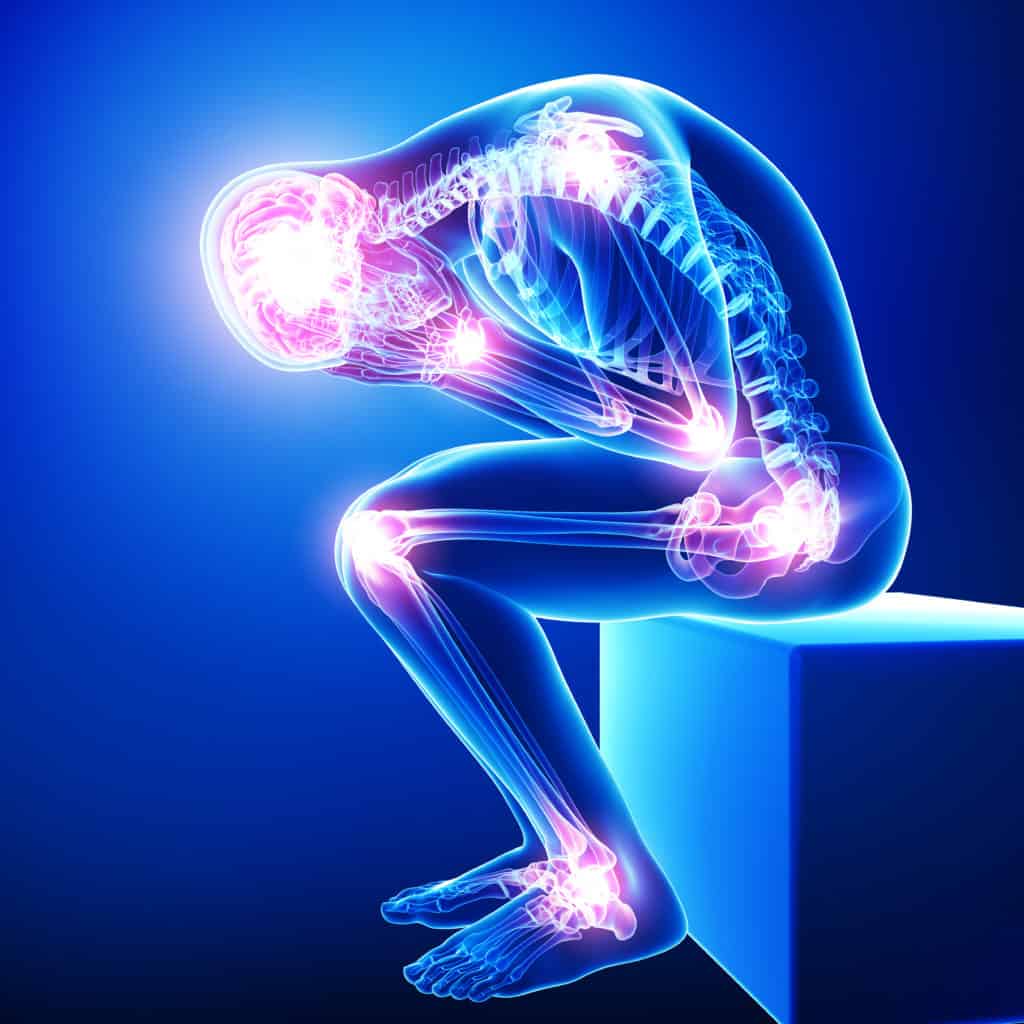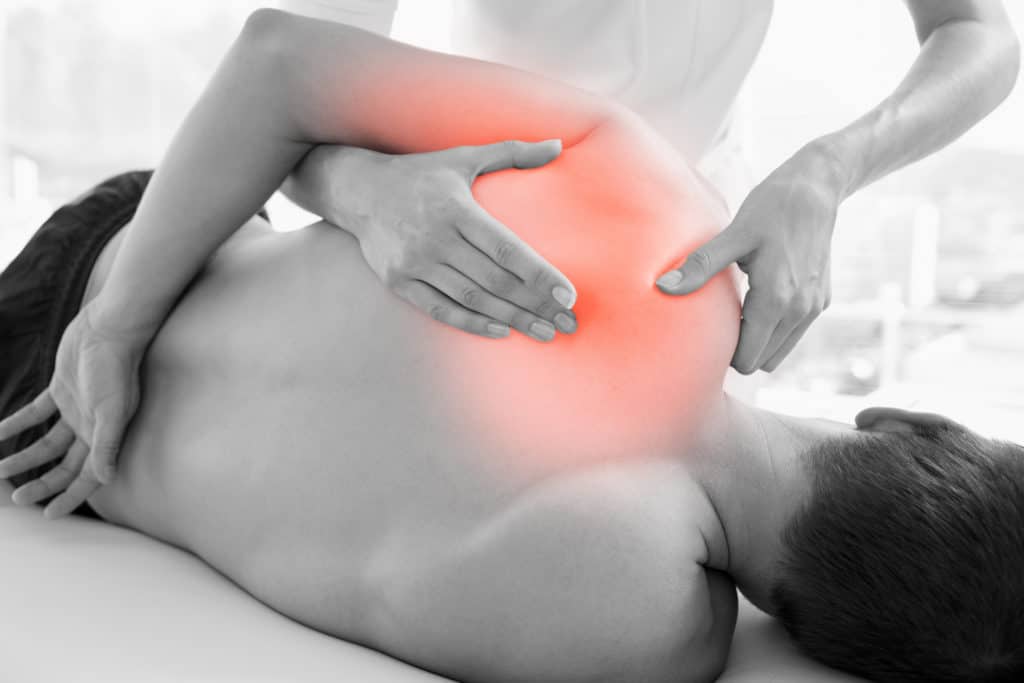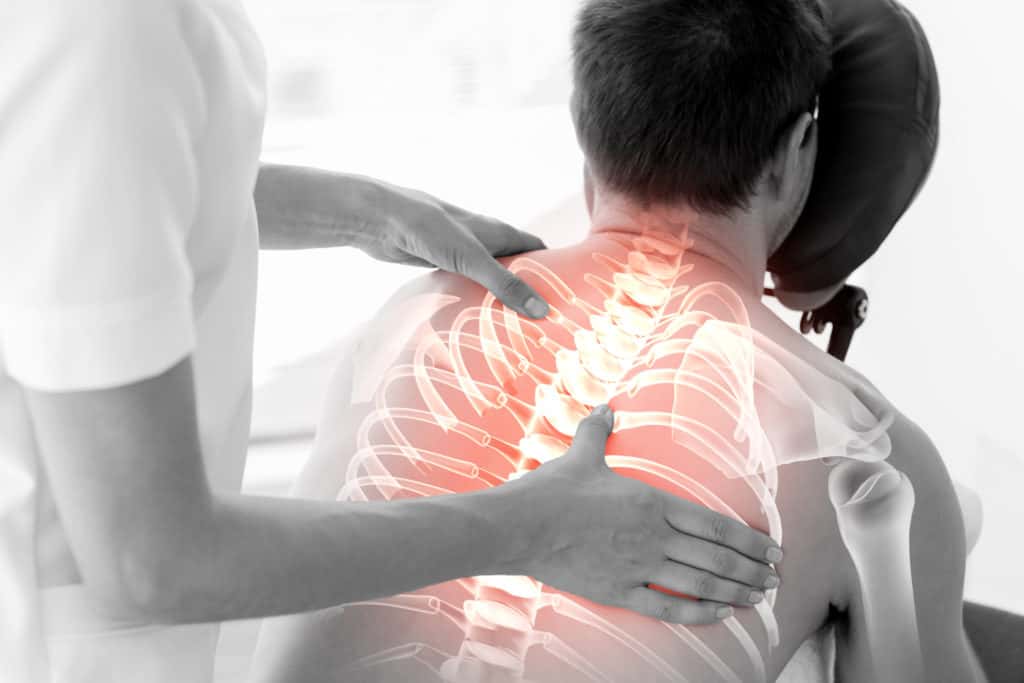
Have you been told by an MD that you have Myofascial Pain Syndrome?
Confused about what it is and why you have it – or whether you can pass it on to your children?
Don’t worry; we’re here to help you.
This blog explores this much-discussed, controversial syndrome and reveals the root cause(s). We discuss whether it’s genetic and explain what you can do to escape from and treat the unrelenting pain (-even if nothing has worked before).
So, what is it? What is Myofascial Pain Syndrome?
Western Medicine describes the So-called Myofascial Pain Syndrome as a chronic pain disorder that causes pain in multiple points all over the body. Allopathic clinicians and medical textbooks say it’s a chronic condition caused by inflammation of the fascia – the connective tissue surrounding the muscles, bones, organs, and other internal structures.
They theorize that the changes caused by the inflammation cause patients to feel pain when their muscles contract. Any sensitive or pressure points located in the muscles then cause pain, often in unrelated areas (otherwise known as referred pain).
This analysis is accurate, in theory. We agree with what it is.
But, Myofascial Pain Syndrome is just a catch-all for a set of symptoms – it doesn’t shed any light on the cause or the cure. It doesn’t help you get out of pain either, especially if you don’t want to take pain pills every day of your life.
The diagnosis just re-confirms your muscle pain symptoms.
But you already know about those, right?
They keep you awake at night.
But the title Myofascial Pain Syndrome does not provide you with answers.
Research suggests that between 30% – 85% of patients with musculoskeletal pain suffer from Myofascial Pain Syndrome. That’s a lot of people who have pain with no known cause or cure.
In many ways, it allows Doctors to pacify and give a name to the patient’s genuine and distressing symptoms – particularly when there isn’t an identifiable cause or nameable disease process. There’s nothing visible on X-rays, ultrasounds, MRI scans, or other tests.
It’s their get-out-of-jail-free card if you like. But the prognosis is usually poor: a lifelong chronic pain disorder. Patients have to accept their fate and take comfort in their suffering having a label because there isn’t an off-the-shelf cure (other than sedatives and more heavy painkillers).
But is that helpful?
We don’t think so.
The real question should always be: “Ok, but what’s the root cause?”
Only then can you begin to find the cure.
“When solving problems, dig at the roots instead of just hacking at the leaves.”
– Anthony J. D’Angelo
What Actually Is Myofascial Pain Syndrome?

(According to a Myofascial Release Therapist)
In our more intuitive, hands-on world, Myofascial Pain Syndrome is an alert system. It’s like the light on the dash when your car needs gas, air in the tires, or ready for its 10,000-mile inspection or service. Your body needs attention – it’s not broken. Terms like Myofascial Pain Syndrome, Fibromyalgia, and other chronic diagnoses often lead patients to accept pain as part of life. How depressing is that?
It doesn’t have to be. There is another way.
Myofascial Pain Syndrome usually presents in the Doctor’s office with several symptoms, including aching pains deep in the muscles, which have persisted or worsened over a long period. The pain likely worsens when you stretch the affected muscle.
There might also be fibrous nodules or bands of tissue that you can feel underneath the skin, with patients reporting a knot-type feeling in their affected muscles. Sometimes pressing these nodules or trigger points causes pain in another area of the body – we call this referred pain. And your muscles may feel weaker than usual, with a reduced range of motion or stiffness.
Pain levels vary, but many report pains that are so bad that their ability to sleep, work and perform daily tasks is severely affected. In many cases, an increase in the level of stress or activity correlates with worse pain. Many sufferers begin to stop socializing or playing sports, or doing anything that might worsen the pain. This vicious circle is why sufferers are usually desperate to find a solution and get their lives back.
What Causes Myofascial Pain Syndrome?

Several things can cause (so-called) Myofascial Pain Syndrome. Still, some of the most common reasons are repetitive movements at work or during sports, injuries, poor quality sleep, depression, anxiety, and stress.
You’ll be pleased to hear; it isn’t genetic because genetic factors don’t directly impact the symptoms of myofascial pain. Myofascial Pain Syndrome as a stand-alone condition isn’t in your chromosomes or genetic code. Your children and grandchildren don’t inherit it.
But some people are genetically susceptible to overreacting in stressful situations, leading to the development of chronic stress, depression, and anxiety.
It’s not always the case. But these people are sometimes more vulnerable to developing the type of pain related to Myofascial Pain Syndrome – due to a pattern of chronic tension and tense muscles. Shoulders permanently up by the ears, etc.
So, although it’s not genetic – like hair or eye color – it can be hereditary indirectly. Where chronic tension, over time, leads to a stimulus to the brain, which is known as central sensitization. This release causes the brain and nervous system to stay on a high level of alertness, sending pain signals throughout the body. Eventually creating a vicious circle of tension > pain > tension > pain, and so on…
Other risk factors for developing Myofascial Pain Syndrome are:
- Obesity, which puts additional pressure on muscles
- A Sedentary lifestyle and chronic lack of daily movement
- The hormonal changes associated with the menopause
- Fatigue and lack of good quality, restful sleep
- Bad posture and sitting for prolonged periods
- Muscle myopathy and other inflammatory conditions
How To Treat Myofascial Pain Syndrome

Everyone at some point will experience muscle pain. It’s common after a heavy session at the gym when you get pain in the muscle(s) you worked out the following day (or days) after. However, in most cases, it goes away when your muscles recover after the gym or tense muscles relax. But if the pain continues for six months or more, it’s time to seek help from a trained professional.
Following a differential diagnosis that rules out more obvious conditions, Western Medicine Doctors treat Myofascial Pain Syndrome with steroids, anticonvulsants, antipsychotics, or anti-inflammatory medications—given orally or via injection directly into the muscle.
These drugs have an array of adverse side effects ranging from dry mouth, dizziness, and seizures to liver damage and heart, lung, and thyroid problems. But even without the risks of severe side effects, these drugs do nothing more than mask the pain. When you stop taking them, the pain returns, usually with a vengeance.
Aside from drugs, massage treatments offer only temporary relief. They’re relaxing and appear to relieve pain during the session. But shortly after you step out of the salon, the pain returns relatively quickly.
It’s exhausting. Chronic pain is tiring – and that’s putting it mildly.
There are some things you can do at home, which may help, such as investing in a good mattress and making sure you’re not sleeping in an awkward position. Taking the time to check the ergonomics of your desk – so your computer is at eye level, your feet are flat on the floor, and you do not have to twist.
Staying active with a daily walk or another form of gentle exercise, like swimming, yoga, or Pilates, may help relieve pain too. Heat therapy – with a hot water bottle, heat wrap, or ice pack may help, at least in the short term, along with hot baths or cold-water swimming.
Exact prescriptions for these things usually come down to personal preference and trial and error. But none of these things are likely to offer a long-term cure on their own.
That’s where we come in.
At Release Works, we use a hands-on technique called Myofascial Release Therapy, which effectively treats patients who present with long-standing muscle pain and other conditions such as headaches, tinnitus, pelvic, and low back and neck pain.
Instead of treating muscle pain or trigger points in isolation, we look at the whole person with these conditions. We find and treat the root cause, which is more than likely something completely different from your presenting symptoms.
Treatment sessions are relaxing and non-invasive. In many cases, noticeable change happens in the first several sessions – with positive results building over time.
Would you like to find out more?
We offer all new patients the choice of a 30-minute free telephone call or an in-clinic consultation. Talk to an MFR Therapist to learn more about this revolutionary treatment and how we help patients just like you.
Book your telephone appointment now or apply for a complimentary Discovery Visit. We’d be more than happy to help you regain the lifestyle that you deserve!
Want immediate advice? Read our Free Report on “Who is Myofascial Release Therapy For And What Can It Do For You”.

